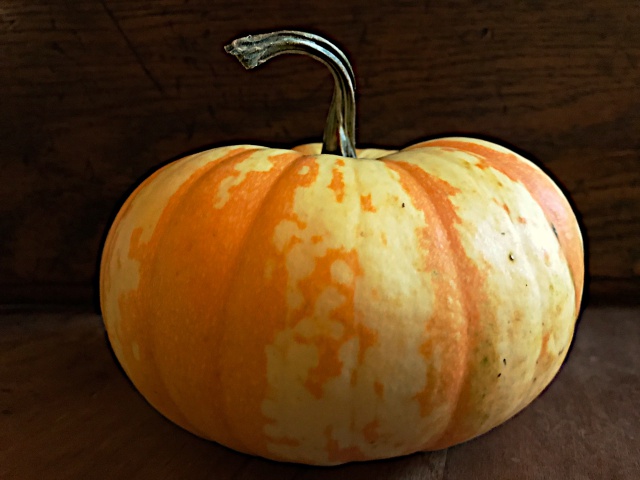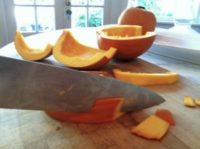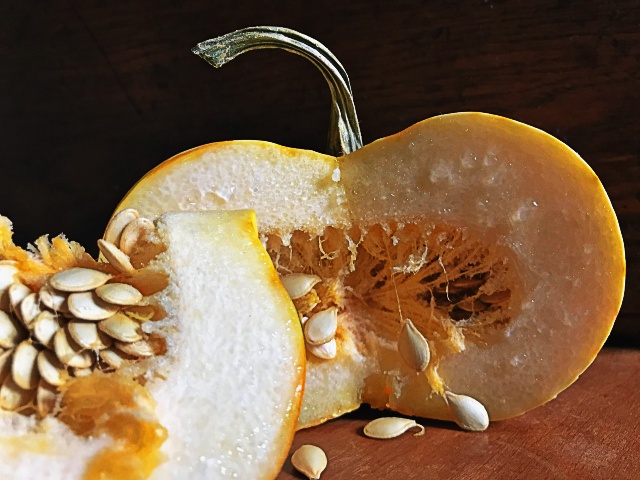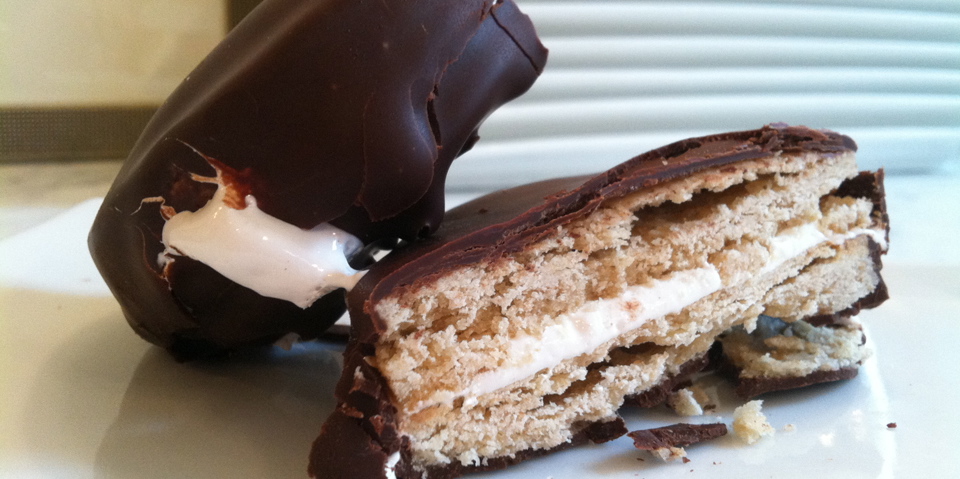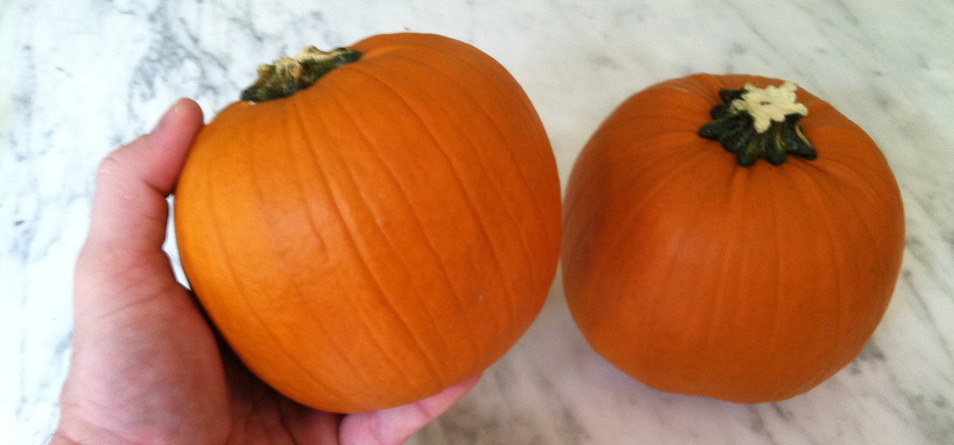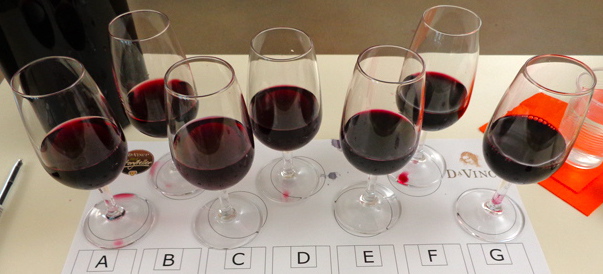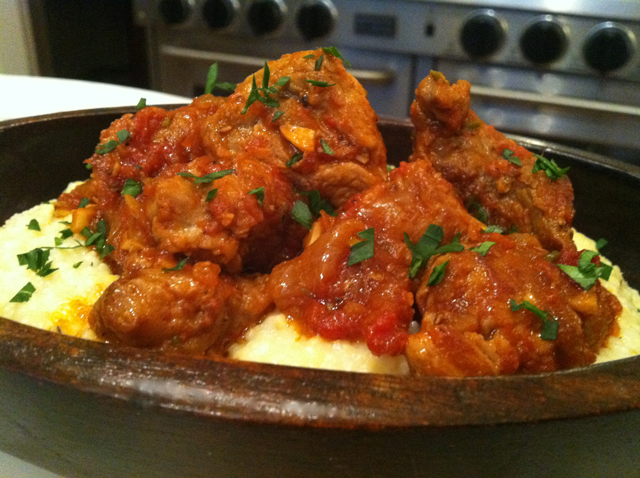Halloween is over and for most Americans that means the pumpkin becomes a forgotten thing. Mr. O’Lantern served us well, and then like the TP draped over the neighbor’s trees or the discarded candy wrappers strewn across our kitchen counters or desks at work, Jack finds his decaying head thrown into the trash — or if he comes from a green-minded home, added to the compost heap. 
Non-edible gourds seem to take over our decorative fascination between All Hallow’s Eve and Thanksgiving, which is when the pumpkin reappears in ubiquitous pie form. I think most people believe a pumpkin’s sole existence is for either an evil spirit prevention device or a pie. That is rather disappointing, considering how much palate power a pumpkin packs.
In Italy, where Americanized Halloween is slowly taking hold and where there is no Thanksgiving holiday, pumpkin — zucca — has a lot of culinary uses, much like its other squash cousins. Yes, pumpkin is a squash, and squash is a fruit, a vine grown fruit. There are hundreds of pumpkin varietals ranging in all heirloom & hybrid sizes & colors. Orange is not the only pumpkin color in town.
{Language lesson sidenote: Zucca does not mean “pumpkin” specifically, in Italian. It can mean any squash — acorn, butternut, etc. In fact, the Italian word zucchina (“zucchini” in English) is created by taking the root word zucca and adding the feminine diminutive ending -ina to it to form zucca-ina, which, because of how the Italian language constructs sounds, becomes zucchina — a small squash. In Italian, zucchina is singular, zucchine is plural. In English, regardless of how many you have, it is always “zucchini.”}
Here is one of my favorite ways to use pumpkin across the fall and into the winter season … Minestrone with Fall Vegetables and Pumpkin (remember, pumpkin is not a vegetable). Of course, it might be difficult to find a fresh pumpkin past Thanksgiving here in the States. In Italy, one can find pumpkin freshly sliced in the produce department of most grocery stores while in season throughout the fall. I’ve never seen that anywhere where I’ve lived in America. Pity, my loss. Maybe your local supermarket is more adventuresome than mine?
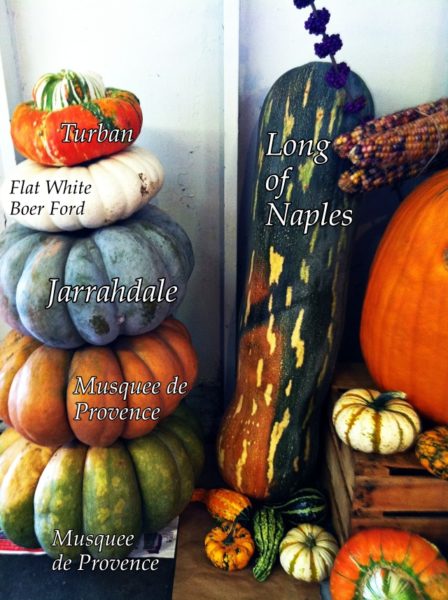 However, I can find a wide variety of pumpkin and squash at my local farmer’s market. Often times, the roughest looking varietals have the most delicious, velvety flesh … deeply orange in color, or as with the Blaze pumpkin shown at the beginning and end of this post, a delicate butter-colored hue. If possible, try not to use the tradition “Jack O’Lantern” pumpkin with it’s thin flesh for cooking … it’s best for carving and haunting. I gravitate toward a Jarrahdale, Baby Doll (see Frankenstein above), or any of the heirlooms: Musquee de Provence (orange or green), or the wildly prehistoric looking Long of Naples, which can range up to 4-feet long. Mamma mia! That’s a lot of soup, pie, gnocchi, risotto, muffins, tortas, and every other dish calling for fresh pumpkin.
However, I can find a wide variety of pumpkin and squash at my local farmer’s market. Often times, the roughest looking varietals have the most delicious, velvety flesh … deeply orange in color, or as with the Blaze pumpkin shown at the beginning and end of this post, a delicate butter-colored hue. If possible, try not to use the tradition “Jack O’Lantern” pumpkin with it’s thin flesh for cooking … it’s best for carving and haunting. I gravitate toward a Jarrahdale, Baby Doll (see Frankenstein above), or any of the heirlooms: Musquee de Provence (orange or green), or the wildly prehistoric looking Long of Naples, which can range up to 4-feet long. Mamma mia! That’s a lot of soup, pie, gnocchi, risotto, muffins, tortas, and every other dish calling for fresh pumpkin.
I hope you’ll try this minestrone, especially now while pumpkins are still around. Pumpkin gives an irresistible sweetness to this hearty, meatless soup. Perfect for a chilly weekend night … or as a night-before-Thanksgiving meal, where it can dutifully wait on the stovetop to satiate ravenous family whenever they land on the doorstep after weathering the hectic pre-holiday commute … over the river and through the woods, and all that jazz.
Buon Appetito~
Fall Vegetable Minestrone with Pumpkin
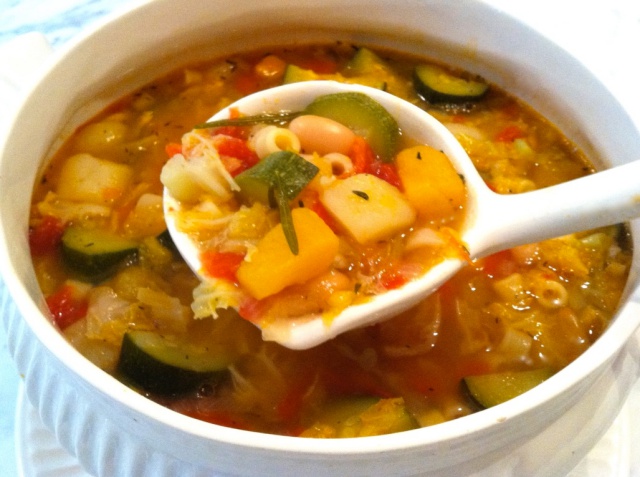 ~ Minestrone di Verdure Autunnali con Zucca ~
~ Minestrone di Verdure Autunnali con Zucca ~
CLICK HERE to watch me cook this recipe on Alabama Live!
In Italian, “minestrone” means “big soup.” Originally a soup based in poverty made with water plus whatever leftover vegetables, beans and pasta scraps were found in the kitchen, minestrone today combines fresh garden vegetables with the “extravagance” of chicken stock, making this a popular soup in Italy. In the fall, pumpkin replaces the traditional use of carrots while cabbage is a hearty, cool weather addition. Swap out the chicken stock for vegetable stock and you’ll have a veritable vegetarian version worthy of any vegan!
2 tablespoons extra virgin olive oil
1 small to medium yellow onion, finely chopped
2 medium potatoes, peeled, diced into 1/2-inch-thick cubes
2 cups diced pumpkin* — 1/2-inch-thick cubes (acorn, butternut, or other winter squash may be substituted)
1 teaspoon dried thyme
1 sprig fresh rosemary, 6- to 8-inches long
2 teaspoons Kosher or sea salt
1/2 teaspoon freshly ground black pepper
8 cups canned, low-sodium chicken stock (homemade chicken stock is preferred)
1 (15.5-ounce) can cannellini beans, drained and rinsed
2 small- to medium-sized zucchini, cut into 1/2-inch-thick half-rounds
2 cups shredded cabbage
2 tomatoes, deseeded, diced into 1/2-inch-thick cubes
1/2 cup ditalini, tubetti, or other small-shaped pasta
Grated Parmigiano-Reggiano cheese for garnish
In a large Dutch oven or soup pot over medium-high heat, heat the olive oil. When hot, add the onion and sauté for 1 to 2 minutes, until the onion has started to turn translucent. Add potatoes, pumpkin, thyme, rosemary, salt and pepper, stirring well to combine. Sauté for 2 to 3 minutes, until the potatoes and pumpkin begin to color. Add the chicken stock and the beans, stirring well. Bring to a boil, cover, reduce the heat to low and simmer for 10 minutes. Raise the heat to medium-high, add the zucchini, cabbage and tomatoes, stirring until combined. Return to a boil, cover, reduce the heat to low again and simmer for another 10 minutes. Stir in the pasta and cook, uncovered, for an additional 8 to 10 minutes, until the pasta is al dente – tender, but firm to the bite. Taste for seasoning and adjust with salt and pepper. Serve with a sprinkle of grated Parmigiano, and a drizzle of extra virgin olive oil as garnish. Serves 8 to 12.
*Note: Dicing a pumpkin is easy: Cut in half, deseed, cut into wedges and then cut the peel from the wedges. It can seem a bit daunting considering how large and thick some pumpkins are. Go for a small one, like a Blaze pumpkin, and use a sharp knife.
Copyright © Mark Leslie, 2018
